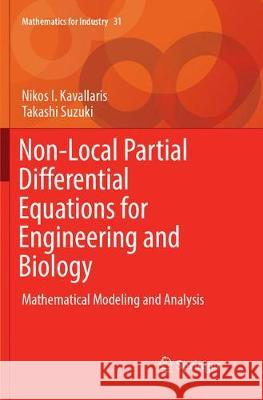Non-Local Partial Differential Equations for Engineering and Biology: Mathematical Modeling and Analysis » książka
topmenu
Non-Local Partial Differential Equations for Engineering and Biology: Mathematical Modeling and Analysis
ISBN-13: 9783319885155 / Angielski / Miękka / 2018 / 300 str.
Non-Local Partial Differential Equations for Engineering and Biology: Mathematical Modeling and Analysis
ISBN-13: 9783319885155 / Angielski / Miękka / 2018 / 300 str.
cena 524,53
(netto: 499,55 VAT: 5%)
Najniższa cena z 30 dni: 501,19
(netto: 499,55 VAT: 5%)
Najniższa cena z 30 dni: 501,19
Termin realizacji zamówienia:
ok. 22 dni roboczych
Dostawa w 2026 r.
ok. 22 dni roboczych
Dostawa w 2026 r.
Darmowa dostawa!
Kategorie:
Kategorie BISAC:
Wydawca:
Springer
Seria wydawnicza:
Język:
Angielski
ISBN-13:
9783319885155
Rok wydania:
2018
Wydanie:
Softcover Repri
Ilość stron:
300
Oprawa:
Miękka
Wolumenów:
01











